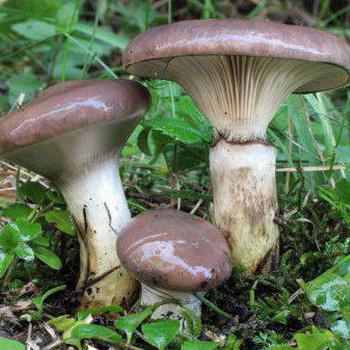False oiler: how to tell if a mushroom is real
 Oils have incredible taste, useful vitamins and essential amino acids. In nature, there are more than 40 species of them, but not all of them are edible. In this case, the question arises: if there are false and normal boletus mushrooms, then how to identify them among such a variety? Use the following tips for novice mushroom pickers.
Oils have incredible taste, useful vitamins and essential amino acids. In nature, there are more than 40 species of them, but not all of them are edible. In this case, the question arises: if there are false and normal boletus mushrooms, then how to identify them among such a variety? Use the following tips for novice mushroom pickers.
How to tell if boletus is false or normal: distinguishing features
The very name "oiler" is associated with the appearance: it has a slippery and oily cap. On this basis, this glossy mushroom is recognized. In addition, there are always remnants of a white coverlet under the cap, which forms a ring on the leg.
However, boletus has brothers that pose a danger to humans. How to correctly identify false boletus mushrooms so as not to harm yourself and your loved ones? Inexperienced mushroom pickers can accidentally put in a basket along with real butter and false doubles. The use of such mushrooms for food leads to poisoning, as well as dysfunctions of the human body. And although modern medicine does not know deaths, nevertheless, novice mushroom pickers should understand what a false oil can looks like and how to identify it among the real ones.


False oil has distinctive features, and it is not too difficult to recognize them. Real boletus always have a slimy brown cap. In young mushrooms, the underside of the cap is covered with a white film, which later breaks and remains on the stem like a ring. The lower part of the head of a real oiler has a finely pored tubular structure. And in a false mushroom, it is gray and lamellar. It will not be difficult for an experienced mushroom picker to identify real boletus mushrooms. He will never confuse them with false views. However, for beginners lovers of "quiet hunting", the found oil can should be carefully studied. Take a close look at the color of the cap, try it by touch, and look under it.
How else to identify false boletus for a novice mushroom picker? To do this, you should especially carefully examine the color of the cap. In a false oiler, it will have a purple tint and a spongy structure.
Amateur mushroom pickers should remember one important point: boletus has no poisonous counterparts in nature. However, if the mushroom is in doubt, then it is better not to touch it, but to collect those boletus that you are sure of!










